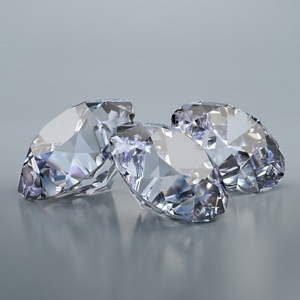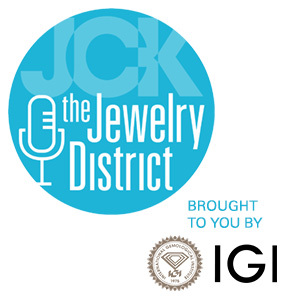
When I graduated from college, I moved to Boston and found myself initially unable to land a full-time writing gig. So I took a temp job as a telemarketer for MCI’s long-distance service. My job was to cold-call small-business owners and try to convince them to switch from AT&T, the then-leader.
We thought our case was obvious: MCI’s service was “the same, yet cheaper.” (Sprint was cheaper than both AT&T and MCI, but we never mentioned that.) The sales trainers would show us videos how fast AT&T was losing market share. We felt like we were rebels, battling Goliath.
We weren’t, of course. We were telemarketers, annoying people during their business hours, touting a company whose corporate parent later got caught up in an ugly accounting scandal. We made sales, though most people hung up on us, and many people were resolute on sticking with AT&T. We knew, when we heard those words, or some variation of them, you might as well hang up. Your job was done. There was no budging them.
Which got me thinking: How did AT&T retain so many customers? It turns out that AT&T went after MCI, fiercely at times. Here are some commercials:
“AT&T was considered slow, ponderous, a former monopoly, not too bright,” one of its executives crowed after the bankruptcy of MCI’s owner WorldCom. “It turned out that neither of those perspectives were correct.’
All this came back to me when I attended the International Diamond Manufacturers Association (IDMA) annual presidents’ meeting, held March 16 in New York City. Most of the attendees were frustrated that the natural business was losing market share. They wanted to know how to fight back.
One of the speakers was Marcus Fischer, CEO of ad agency Carmichael Lynch. He said that good advertising defines an “enemy”—which many in the room assumed to be lab-grown.
Ya’akov Almor, the day’s moderator, pushed back a bit, saying there was a general consensus that the industry’s early efforts at denigrating lab-grown diamonds had backfired, and had inadvertently given the product more attention.
Fischer countered that “if over half of retail sales are lab-grown, your enemy is kicking the [crap] out of you, you have to kick back.”
Which is generally how things work in the world of politics, according to campaignschool.com. “There’s absolutely no reason to go negative if you’re going to win in a landslide,” says the site. “If the race is close, tied, or you’re behind, then you probably need to attack.”
Does that mean the natural business should “attack” lab-grown? Negative campaigns are divisive, ugly, and have generally left me uneasy. And considering most retailers and manufacturers deal in both, not every company might want to get behind that message.
That said, the lab-grown industry has been punching the natural business for a long time. Even calling lab-growns “conflict-free” (whch they aren’t always) carries the implicit message that all natural diamonds are tied to conflict.
To be sure, the natural industry has “kicked back” on occasion. But those efforts have been scattered. At the IDMA meeting, some thought the natural industry no longer has a choice but to “go negative.”
Olivia Landau, CEO of e-tailer The Clear Cut, has become known for putting anti-lab-grown messages on social media. That’s gotten her some pretty fierce blowback. But it does get a reaction. Which matters on social media platforms, since they prioritize polarizing content. It’s the same reason that lab-grown companies put out their own divisive messages. They get attention.
“We have tested a lot of messaging, from positive natural to anti-lab, to see what resonates best,” Landau said at the IDMA meeting. “Being online, and on TikTok, you get that real-time feedback.
“Obviously, category marketing with beautiful imagery and celebrities is great. But you need to be on TikTok telling consumers exactly what lab-grown diamonds are. They’re not the same product, you cannot sell them apart, and they cost $100 a carat. That is very simple messaging that changes people’s perceptions [and gets them to think], ‘OK, these are two different products….’
“Everyone wants diamonds. Everyone loves diamonds. Everyone knows diamonds are beautiful. Why natural diamonds? What is the distinction? There has to be marketing for why natural, and why not lab. The category marketing has been beautiful and great but it doesn’t really address that distinction, which is what we need.”
I think that last point is key. Natural diamonds are a new category of product. They’re not just diamonds. They’re natural diamonds. That’s what the natural industry needs to promote. I don’t think the natural industry should slam lab-growns, even if it makes the algorithms happy. But the trade does need to make a clear case why people should pay more for its product.
Take Patek Philippe’s famed tagline: “You never actually own a Patek Philippe. You merely look after it for the next generation.” That’s very close to the natural diamond sales pitch. Natural diamonds have value (even if they don’t always retain it). A natural diamond can be handed down to your grandchildren. That could have a lot of emotional resonance to a couple who are just starting their lives together.
“You have to be aggressive and defend the product that you’re selling,” Landau said. “You can’t be wishy-washy with it.
“Something we’ve been testing that does resonate is the Botswana story—telling people this is from Africa, but these people have control over their natural resources, they go to school for free, they have no student debt,” Landau said. “They have free health care. They’re a world-class place, with an amazing ecosystem and safaris.”
Price Blanchard, chief customer officer and executive vice president at Shane Co., argued that the industry’s message can work, if delivered properly.
“Gen Z is going to be offended if you tell them, ‘You’re making a bad choice. You don’t love someone if you don’t spend more money,’” he said. “That is going to push them away. We talk about the good diamonds do, and why they’re so special, and how one is created in a factory. If you still want a lab-grown, great. But if you want something that took billions of years to make, that benefits 10 million families, that resonates great.”
The key, he said, is getting retailers on board.
“Some of us are lucky, we get to go see the good diamonds do,” said Blanchard. “I tell the people that work for us those stories, firsthand. Most mom-and-pop retailers don’t have someone in their organization to actually see that. They don’t know the stories; they don’t know why they should care. We have an opportunity right now, as lab becomes less profitable, as top-line sales keep coming down, they will be at the point where they have to make lots of decisions.”
He particularly liked some of the promotional materials provided by the Natural Diamond Council, which he said are customizable to individual stores.
So what should the natural diamond sales pitch be? Botswana? Enduring value? Natural versus manufactured?
Fischer noted the industry doesn’t have to decide. Take the message that diamonds help Botswana (which, I should note, is probably best delivered by people from that country). Fischer admitted that might not matter to all consumers—but this new digital world allows you to slice and dice messages to reach different audiences.
Lab-grown diamonds are here to stay, and will always command some part of the market going forward (including engagement). The business isn’t going to magically go back to how things were. Despite the lab-grown industry’s current issues, they remain a significant, possibly even existential, threat to the traditional trade.
That was made clear by Anoop Mehta, managing director of India’s Gem and Jewellery Export Promotion Council, who said that, from the perspective of some Indian manufacturers, the U.S. market is “lost” for natural.
“I know that’s very blunt, but that is [how they see it],” he said. “We know that the Indian market is still not lost. We know that the Chinese market is not lost. That is where you should invest [marketing dollars].”
I don’t know if the U.S. market is “lost,” but it’s clearly been extremely receptive to lab-grown in a way that’s hurt the natural business. And many believe that will continue if the natural diamond business doesn’t do more to promote itself. In a presentation at the IDMA meeting, Kristina Buckley Kayel, managing director and chief marketing officer for the Natural Diamond Council (NDC) in North America, shocked some participants when she noted that the NDC has only a $12 million ad budget for the United States.
Fischer said spend should be many times that to make an impact. “In the court of public opinion, [natural is] losing,” he said. “You’ve got to do something now, because you are being reframed. The younger generation has no story to tell.”
That was the consensus at the IDMA meeting: Not every attendee agreed the natural diamond industry’s message needs to be negative, but they all agreed that it needs to be out there.
(Photo credit: Getty)
- Subscribe to the JCK News Daily
- Subscribe to the JCK Special Report
- Follow JCK on Instagram: @jckmagazine
- Follow JCK on X: @jckmagazine
- Follow JCK on Facebook: @jckmagazine





